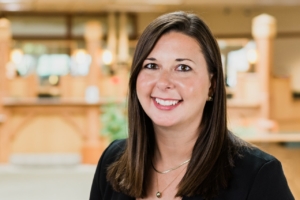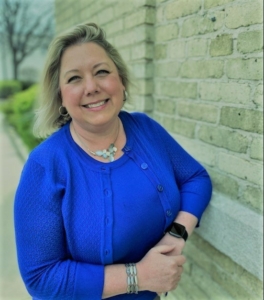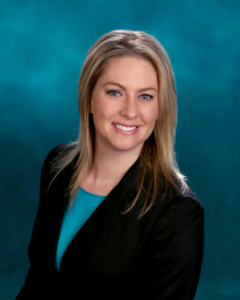By Hannah Flanders
It has been two years since March 11, 2020, yet its transformation is still felt far and wide. A time marked by swift transition and angst among all — bankers will recall the call to action by their community members to be there through this time of uncertainty.
2020 and 2021 were marked by Wisconsin bankers’ quick action in providing Paycheck Protection Program (PPP) loans to local businesses, increased digitalized services, and defense from COVID-related fraud. Bankers continually step up to the challenge of providing critical support and the sense of stability to communities throughout Wisconsin, a tradition as old as the industry itself, and the events of the last several years have only highlighted the dedication they have for one another.
At the onset of the pandemic, many bank branches in Wisconsin closed their lobbies and non-client facing employees were sent home to work. As restrictions have eased throughout the last two years, bankers not only have returned to the office with a greater sense of commitment to their communities, but a new perspective on their role within the bank.
“Even as the pandemic seems to be winding down, our bank’s focus continues to be protecting the health and safety of our associates, clients, and communities,” says Paul Hoffmann, president and CEO of Monona Bank. In an effort to provide this for the Monona Bank team, Hoffmann explains the bank’s effort in establishing a ‘COVID team’ responsible for keeping fellow employees updated regarding recent trends.
From IT departments and marketing officers to the frontline staff, many experienced a major shift in the way their position impacted the bank.
One of the immediate changes Loni Meiborg, senior vice president of organizational development at Fortifi Bank, Berlin, noticed as the pandemic wore on is the need to do more with less. “[Fortifi was] already running with lean branch staff, and we had to prepare for the worst — the potential of a total sweep of our team,” said Meiborg. “This led us to cross-train more aggressively, ask the team for schedule flexibility, and deploy support staff to front-line environments to remain open in some circumstances. We felt our integrity and reputation rested on the clients’ access to their money. Even when lobbies closed, we found a way to reassure clients that we’re here and open through this.”
Additionally, Meiborg’s role as senior vice president of marketing transitioned to its current title of senior vice president of organizational development during the pandemic to allow Fortifi Bank to further understand the functionalities of the bank in addition to prioritizing the strong relationship between employee and client. This trend was hardly exclusive to Wisconsin community banks, as bankers throughout the industry took on greater responsibility in ensuring the bank continued to operate smoothly and that it was also meeting the needs of both the customers and its employees.
The roles of bankers were also dependent on the physical location. Front-line staff faced the challenge of assisting customers in ways they never previously had and became responsible for
making bank offices and lobbies COVID-friendly. Those working partially or fully remote grappled with PPP-related coverage, assisting in departments apart from their own, and engaging with customers from a distance. However, though these challenges proved difficult, bankers were able to adapt to their circumstances, grow as team members, and gain valuable work experience in other aspects of the bank. These involuntary exercises in team building have given bankers a greater perspective on the operations of their bank and have helped prepare staff for the potential of future interruptions.
“Each spring, Westbury Bank holds a celebration for its staff and their hard work over the past year,” told Lisa Dixon, senior vice president of retail banking. “The final stages of planning were brought to a screeching halt in March 2020. Between remote workers, alternating branch staff, and limited in-person meetings, our staff quickly began to feel a sense of isolation. It was important for our bank to find new ways to engage team members safely and meaningfully.”
These activities included Friday bingo, weekly trivia, designing masks, and pumpkin carving shared via the intranet. Dixon explains that it continues to be important for banks to foster an environment of unity for the betterment of employee culture — even as bankers return to their offices and COVID-related restrictions subside.
Recently, the media has shown strives to rebound to the “way things were” before March 2020. Individuals and businesses alike have seen a dramatic shift in their day-today operations, but efforts to embrace the realities of the future in every opportunity and challenge it provides should not be forgotten.
In addition to the ways the roles of bankers have changed, the tools bankers now use to perform daily functions have adapted to the digital world. Technology streamlined through remote work — Teams, Zoom, digital signatures, and many others — continue to be resources bankers rely on to perform their tasks and meet the needs of customers.
The digital evolution of banks and their bankers were critical in limiting exposure during the virus’s peak and continue to be important in talent retention and attracting new customers. During the pandemic, it was critical that banks invest in the technology that would keep their staff and customers connected. In the aftermath, these advancements have been important in keeping the banking industry relevant among constant development.
“Increased usage of our mobile app for banking, along with the desire to move toward an ‘appointment’ approach for our bankers, had been on our agenda for quite some time,” says Dixon. “The pandemic gave us the opportunity to further promote those services we knew our customers would love. They’ve [since] embraced them whole heartedly as it gives them the ability to bank on their schedule.”
Over the course of the pandemic, bankers throughout Wisconsin expanded their reach, reinforced their bonds with community members, and established loyal customers who understand the importance of banking local. “Clients have come to rely on us for guidance in the market, business economics, and planning for their future,” says Meiborg. “We proved that we were reliable when the world wasn’t.”
“[Monona Bank] has never had so many unsolicited recommendations and referrals as the past several years, which I attribute to being there when they needed us when others were not,” says Hoffmann. “We helped many clients keep their businesses open and their employees working. This helped us build loyalty and trust with our clients and community.”
Bankers have truly stepped up and into their communities over the last two years. In reassuring Wisconsinites that their community banks were the safest place not only to keep their money, but to obtain trusted guidance and comradery, the industry has proven itself to be a reliable asset to every community. As the banking industry continues to evolve and grow, bankers prove themselves as dedicated and adaptable for not only the benefit of their communities, but for their team as well.


 By Alissa Weber
By Alissa Weber By: Ashley Clemons
By: Ashley Clemons

 By Kathleen Rolfs
By Kathleen Rolfs

 Navigating, planning, and embracing change through a global pandemic
Navigating, planning, and embracing change through a global pandemic